Article from the section “Calendar of work for gardeners and vegetable gardeners”
June took over the gardening baton from May, adding its own worries. It is necessary to strengthen the health of seedlings planted in the ground, sown root crops, and protect the garden from pests. Experience shows that it will not be possible to relax and leave the plants without our close supervision.
And now, first things first:
June concerns for gardeners
Your garden: work of the month
In June, shoots on trees and shrubs actively grow. Therefore, the need for nitrogen and water is especially great.
Feed and water the plants regularly
Fertilize in the garden at intervals of 15-20 days: 40-50 g of urea per 10 liters of water, 2-3 buckets per tree and 1 bucket per berry bush. Pour the nutrient solution into the depressions and grooves in the tree trunk around the perimeter of the crown. The depth of the groove under trees is 25-30 cm, under bushes - 10-12 cm.
Apply the second fertilizing with organic matter - a solution of mullein (1:10) or bird droppings (1:20).
Combine fertilizing with watering, especially in dry weather. With a lack of moisture, the ovaries shed excessively and the berries become smaller. Black currants, the most moisture-loving crop in the garden, suffer greatly from drought. After harvesting, water the strawberries between the rows without splashing the berries.
To preserve soil moisture, mulch the tree trunk circles with compost, humus, and mowed grass. In gardens where the soil is covered with sod, cut the grass and leave it in place as mulch.
Try not to overfeed your plants, especially with nitrogen. Excessive use of phosphorus-potassium fertilizers can prevent the plant from absorbing microelements, and it will show signs of their deficiency.
Pay attention to garden strawberries
The first harvest of this season (if you don’t have honeysuckle) has ripened - garden strawberries have pleased me. In hot, dry weather, water in the furrows in the afternoon.
Such watering increases the size of still green, growing fruits and increases the yield. When the surface of the soil dries, loosen the rows and in the rows - carefully, trying not to dust the berries.
When picking berries, do not pick them up with your fingers: this will cause them to wrinkle.Using two fingers (thumb and forefinger), take the stem and cut it off with your nails, without squeezing the berry or pulling it.
It’s good if you lay moisture-resistant paper, straw or film under the plants in advance to retain moisture and protect the berries from contamination.
To harvest strawberries (and then raspberries and blackberries), it is convenient to use plastic trays with a capacity of 2-3 kg. They are placed in plastic containers or boxes made of thin boards - transportation will take place without waste.
It is better to pick berries in the morning, when the dew has dried, in dry, sunny weather, before they warm up.
Immediately after harvesting the strawberries, remove the “whiskers” with pruners. They deplete plants and reduce next year's harvest by 30-40 percent.
If strawberries are affected by powdery mildew, white leaf spot, gray mold, pests (mites, weevils, leaf rollers), no later than 5-7 days after harvesting, the leaves are mowed or cut off with pruning shears and removed from the site.
Then spray the area with 1% Bordeaux mixture or its substitutes, insecticides (actellik - 15 ml, fufanon-nova - 10 ml, alatar - 5 ml per 10 liters of water).
Don't forget about raspberries
In early or mid-June, you can carry out the first pinching of the green tops of annual raspberry shoots that have reached a height of 100-120 cm, by 5-10 cm. On tall varieties, this is done earlier - when they grow to 70-80 cm.
After this, sprouts will appear in the axils of the upper leaves, and by the end of summer, side shoots 30-80 cm long will grow. Next year in the spring they need to be shortened by 15-30 cm. Fruiting of the raspberries will last, the yield will increase.
However, this method is only suitable for unthickened raspberries. It is also not used on remontant varieties, since their autumn harvest is concentrated on the tops of the shoots.
You can do cuttings
In June they do green cuttings. Do not use currant shoots, tops and very short tree shoots for planting. The length of the cuttings of most crops is two to three internodes. Shoots with a piece of branch take root well.
At the beginning of the month, prune frozen trees. If the tops of the branches are frozen, cut them down to the living part. If the young tree is very frozen, cut it down to a stump and form a new tree from the young shoots that have grown above the grafting. Dry branches can be cut throughout the season.
What to do with a falling ovary?
In June, natural shedding of the ovary occurs. First, the ovaries that are affected by pests and diseases fall off, as well as the excess ovaries that the tree cannot feed.
If the ovary shedding is too large, fruit rationing can be done. Using pruning shears, cut out the small ovary, leaving 1-2 of the largest fruits. The harvest will not decrease in weight, and the tree will be protected from periodicity.
To reduce the shedding of the ovary, you can spray the crown with a urea solution (2 tablespoons per 10 liters of water).
The discarded ovary must be collected daily and placed in a compost pit, since codling moth caterpillars have settled in many of them.
Fight tirelessly against pests and diseases
In June, many pests and diseases develop on fruit and berry crops. The most dangerous on an apple tree are:
- scab
- powdery mildew
- codling moth
- sawfly
- leaf roller
- moths
The sawfly can still be destroyed with insecticides at the beginning of June (at the same time as the moth caterpillars). Then the larvae will go into the core of the fruit, and you won’t be able to get it out by any means.All that remains is to collect damaged fruits on the tree or carrion and destroy them.
The codling moth in June is quite accessible to combat it with chemical or biological preparations:
- lepidocide
- bitoxibacillin
- fitoverm
The following chemical pesticides are allowed: inta-vir, fufanon-nova. Use them strictly following the instructions. In addition to the codling moth, these drugs destroy many other pests. The treatment is carried out when a petiole fossa is formed in the apple fruit (a depression at the place where the stalk attaches to the fruit).
Treatments will have to be repeated after two weeks.
In damp, rainy weather, scab can cause great damage to the crop. It will also cause the leaves to die and fall off. Protection against scab On unstable varieties, gardeners spent the green cone phase (April).
In June, it is dangerous to use copper-containing preparations: in humid weather they can cause burns to leaves and fruits. Can be applied:
- soon
- paradise
- chorus
- alatar
These drugs also protect against powdery mildew, moniliosis.
Aphids, cherry flies, and cherry moths can cause significant damage to cherries and other stone fruits. On the plum there is a plum moth, a pollinated aphid. An insecticide is recommended against them fufanon-nova, aktara, inta-vir, zeta.
Stone fruit diseases are threatened by moniliosis on plums and coccomycosis on cherries. Effective against them abi-ga-pik, speed
Gooseberries and black currants are harmed by moths, leaf sawflies, aphids, and red currants by the red currant aphid.
Lepidocide and bitoxybacillin can be used against most of them with a minimum waiting period. Can be used after harvesting fufanon-nova and other chemical insecticides.
In June, some varieties of berry bushes (mostly old ones) are seriously damaged by American powdery mildew.Some varieties of red currant are also susceptible to it. Effective against her topaz (2 g). The waiting period is 20 days, so it can be applied after harvesting.
To protect gooseberries from American powdery mildew, use soda ash with soap (40 g each) or infusion cow dung. One part of rotted manure is poured with three parts of water and left for three days. For the working solution, take 1/3 of the infusion to 1 bucket of water.
This product can be replaced lye ash. 1/4 bucket of ash is boiled in a bucket of water, cooled, filtered, and 40 g of laundry soap diluted in a small amount of water are added.
Strawberries are not treated with anything during the fruiting period. On varieties not resistant to gray rot, clean cut straw is placed under the bushes.
Collect rotten berries in a separate container and destroy them, even the green ones. Do not scatter around the area.
What kind of work awaits gardeners in June?
Your garden: work of the month
To prevent diseases we use biological fungicides:
- phytosporin
- Alirin-B
- gamair
- baktofit
- extrasol
- phytolavine
Chemical fungicides (Bordeaux mixture, abiga-pik, ordan etc.) it is better not to get carried away: treatment with them causes stress in plants and weakens the immune system. We resort to their help only when signs of fungal diseases appear. In the fight against viruses fungicides are powerless.
Balanced fertilizing - root and foliar, growth regulators - will help strengthen the immunity of plants and their ability to withstand unfavorable weather.
Stores offer a huge selection of fertilizers; you can buy one for each type of plant and apply it according to the instructions.
Organic infusions are very useful
Or you can prepare organic infusions yourself: plants react to such fertilizing instantly. You can find a way out, even if there are no supplies of mullein or bird droppings. Make do with what you have on site.
We don’t throw anything away: every weed weeded from the garden bed, when returned as mulch or herbal infusion, will provide food for vegetable plants. Weeds thrown onto the road or burned in a fire are a waste of soil fertility.
If you still have to burn something (sick plants, branches), we try to make the most of the ash. Cabbage loves it (up to a glass per square meter).
We introduce wood ash under the potatoes during the budding period: we cover them with a hoe between the rows and water them. We also add ash to the compost. Simple rules of conduct at the dacha will rid the territory of our SNT from clutter and protect the land from depletion.
You might be interested:
The seeding relay continues in June
The May weather did not allow everyone to finish planting vegetable crops. Don’t be upset: in June you can sow almost anything. Carrots, beets, leaf parsley and celery in well-warmed soil will sprout faster, begin to develop more actively, and soon summer crops will be difficult to distinguish from spring crops.
At the beginning of the month, you can sow even early varieties of tomatoes, not to mention cucumbers: June is the most favorable time for them. You can sow spring onions to get a thin green feather by autumn.
We will definitely sow dill, because spring-sown plants will soon be suitable only for obtaining seeds. Summer-sown dill, of course, will yield less greenery and bloom faster, but it is more aromatic and will be indispensable in salads made from fresh vegetables.
Dill does not necessarily need to be allocated a separate bed. It’s even better to sow it along the edges of areas where tomatoes, cucumbers, potatoes, and cabbage grow. The main vegetables of the garden will respond well to such a neighborhood.
But in June we must sow the seeds of all vegetables in well-drained furrows, planting them a little deeper than in the spring, and after sowing we must mulch them (with compost or grass, non-woven material).
We weed and thin out the beds
There will also be work in the spring sowing beds. The most time-consuming task is removing weeds.
If in beds occupied by seedlings this can be done with a hoe or a flat cutter, then carrots, onions, beets, parsley and even tomatoes without seedlings will have to be weeded by hand. The sooner and more thoroughly we do this, the fewer problems in the future and the higher the harvest.
When thinning out dense beet crops, excess plants can be transplanted into a separate bed. We replant so that the roots do not bend and the growing point is not covered with soil.
It is advisable to thin the onions into turnips in order to increase the feeding area, improve ventilation and thereby protect against downy mildew and obtain large onions.
Use green manure more actively
If we don’t plan to occupy the beds vacated after radishes and early greenery with other crops, we will sow them with green manure. It is better not to sow mustard after radishes, since they are of the same family. In addition, in hot weather, mustard can attract cruciferous flea beetle.
For summer sowings, phacelia is more suitable as green manure. If there are Tagetes seeds, this ornamental plant will perfectly play the role of a soil-healing crop.
But both phacelia and tagetes have one drawback: it’s a shame to dig them up when they start to bloom. And yet you will have to...
Before the rows close, we hill up the early-planted potatoes for the last time, we hill up white cabbage, cauliflower, broccoli, tomatoes, zucchini, and cucumbers, while simultaneously forming irrigation grooves.
Menu tailored to tastes
In June you cannot do without fertilizing. Be sure to combine them with watering.
Tomatoes. We give flowering tomato bushes superphosphate (1-1.5 tablespoons) to form tasty fruits and an organic infusion (0.5 liters per 10 liters of water).
cucumbers at the beginning of flowering we support with complex fertilizer - st. spoon per 10 liters of water. During the fruiting phase, for the growth of shoots and the formation of cucumbers, every ten days we give a teaspoon of urea and potassium sulfate, 0.5 liters of organic infusion per 10 liters of water.
Pepper, eggplant. During the flowering phase, we feed peppers for the first time, eggplants - according to Art. spoon of complex fertilizer per 10 liters of water.
White cabbage During the period of active growth of leaves, we feed with organic infusion (0.5 liters per 10 liters of water), sprinkle the wet rows with wood ash and loosen. We give cauliflower and broccoli complex fertilizer, which contains magnesium and boron, and water it with organic infusion (0.5 liters per 10 liters of water).
Potato During the period of flowering and budding, it forms a crop, so it no longer needs nitrogen, but potassium and microelements that are in wood ash will help the tubers grow.
pumpkin feed with organic infusion (1 liter per 10 liters of water) to encourage the growth of shoots on which flowers and ovaries form. We support the flowering zucchini with organic infusion (1 liter) and complex mineral fertilizer (a tablespoon per 10 liters of water).
Onion, grown for turnips from seeds, at the beginning of the month you can still feed them with nitrogen fertilizers for feather growth: a teaspoon of urea or a glass of organic infusion per 10 liters of water).
Onion, grown from sets, if it has grown enough greenery, we feed it with superphosphate extract (2 tablespoons) or complex mineral fertilizer (1 tablespoon per 10 liters of water).
Carrots during the period of intensive leaf growth, we will give nitrogen: a glass of organic infusion or a teaspoon of urea and a tablespoon of potassium magnesia per 10 liters of water. In the initial period of growth, beets will be helped to activate by 1.5 cups of organic infusion, tbsp. a spoonful of complex fertilizer that contains boron.
Celery. At the beginning of the month, we will feed the celery (petiole, root), planted in seedlings in beds in May, with an organic infusion (0.5 l) or complex fertilizer (a tablespoon per 10 l of water).
Garlic at the beginning of the month we will give an extract of superphosphate - 2 tbsp. spoons per 10 liters of water.
Water, but in moderation
June is the time for intensive watering. But this does not mean that all garden crops need to be watered immensely. Each has its own need, which can change according to developmental phases.
For example, we do not try to heavily water the plants immediately after germination: let their roots grow deeper in search of moisture. The same applies to seedlings planted from cups without disturbing the root ball.
Later, a deep root system will help plants more easily tolerate overheating of the soil and lack of moisture in the quickly drying upper layers.
This rule, perhaps, does not apply only to fast-growing early vegetables (radish, lettuce, arugula, spinach, etc.): the soil in their beds must be constantly moist, otherwise the plants will quickly harden and become unsuitable for consumption.
Watering the cucumbers
From germination to the beginning of fruiting, if the weather is not very hot, it is enough to water cucumbers once a week, otherwise you can cause active growth of green mass to the detriment of fruiting. In addition, excessively wet soil can cause root and basal rot.
After the first greens form, we begin to water the cucumbers more often - 2-3 times a week. On hot days, noticing that the cucumbers have dropped their leaves and the soil is wet, we will carry out a refreshing watering - by sprinkling over the leaves. Looking at the garden bed a few minutes later, we notice that the cucumbers look more vigorous.
How to water zucchini
Although zucchini is related to cucumbers, they are watered less often because they have a deeper root system. If the surface of the bed is well mulched, one watering per week is enough for the zucchini, even in hot weather.
Although it won’t hurt to check the soil moisture once again by digging shallowly with a shovel or hoe. You cannot follow the recommendations blindly. And the weather changes, and the soil even in one area may have different moisture capacity.
How much water do tomatoes need in June?
Tomatoes are watered less often than cucumbers, but the soil is soaked deeper. This culture has stronger and deeper roots. But even for tomatoes in hot, dry weather, watering once a week may not be enough.
A lack of moisture can lead to the formation of a defect on the fruit - blossom end rot. Excess water also often does not go away without consequences, and the fruits on the bushes begin to crack. To prevent this from happening, when the tomatoes begin to turn brown, watering is carried out in smaller doses.
Water the peppers and eggplants
But peppers and eggplants react to even short-term drying out of the soil by shedding flowers, so in hot weather peppers and eggplants must be watered 1-2 times a week.It is advisable to mulch the surface of the bed so that the soil retains moisture better and does not overheat.
Water the carrots
Water the carrots, soaking the soil deeply. Frequent surface watering causes root crops to “branch.” And frequent, abundant watering causes cracking of roots and rotting of the tips.
Cabbage loves water the most
Cabbage is considered a great water feeder, but even it cannot be watered excessively: in excessively wet soil, the roots of the plants die. But even if our love for watering does not destroy the plants, they will form loose heads. Therefore, if we notice that the leaves on the cabbage have darkened, we will reduce watering.
Overdrying the soil is also detrimental for cabbage: white cabbage does not form heads when there is a shortage of water, cauliflower and broccoli do not set heads. You can water the cabbage along the furrows formed after hilling, or by sprinkling, drip.
On light soils, when watering along the furrows, the cabbage will always lack moisture: in sandy areas, the water spreads more vertically than horizontally, and does not reach the roots of the cabbage.
Depending on the weather, cabbage is watered from one to three times a week, soaking the soil to a depth of 40 cm. During periods of crop ripening, watering should be moderate: sudden changes in humidity (from dry to damp) cause cracking of the heads of cabbage.
In hot weather, refreshing watering is carried out to reduce the temperature and increase air humidity for cabbage.
Pests visible and invisible
In May, the meadow moth flew. Therefore, summer residents whose plots are located near uncultivated wastelands need to check vegetable plants: whether there are ovipositions or hatched caterpillars of the meadow moth on the underside of the leaves.Having discovered caterpillars, it is necessary to treat the plants with insecticides (lepidocide, bitoxybacillin).
Cabbage pests.
At the end of May, the cruciferous moth began to fly, which means that its larvae could soon harm the cabbage. They love cabbage and cruciferous bugs. They do not disdain other cruciferous crops; they even destroy horseradish leaves.
We'll have to resort to insecticides. Fitoverm and akarin will help against cabbage moth caterpillars that are starting to hatch. On early varieties of cabbage, you should not resort to drugs with a longer waiting period.
On mid-season and late varieties of cabbage, you can use the chemical insecticides aliot (10 ml per 5 l), fufanon-nova (13 ml per 10 l), senpai (2.5 ml per 5 l) and others.
Pests of tomatoes.
Tomatoes have their own pests - aphids, which contribute to the spread of viral diseases, and bollworms, which damage the fruits.
It is very important not to miss the beginning of aphid settlement. This is especially true for those summer cottages that are located near acacia plantations. It is from these trees that aphids begin their invasion of gardens.
Last season, confidor (1.5 g per 10 liters of water) showed its effectiveness against this pest. Other insecticides are also used: biotlin (5 ml per 10 l of water), golden spark (5 ml per 10 l of water), tanrek (5 ml per 10 l of water), confidelin (1.5 g per 10 l) and others. The list of insecticides allowed in private household plots against aphids is quite large.
Already during the period of flowering and fruit set, treatments of tomatoes against cotton bollworm begin. We do not notice the activity of the first generation of this pest, since it develops on weeds, but as soon as the tomatoes gain strength, cutworm butterflies try to lay eggs on the emerging ovaries.
The viral drug Helicovex (2 ml per 5 liters of water) has appeared in protection against the cotton bollworm. Three treatments can be carried out. There is no waiting period for this insecticide. You can use more conventional preparations against cutworms, but during processing you must cover the ovaries with a working solution.
It is better to give preference to the biological preparation lepidocide (20-30 g per 10 liters of water), but spraying will have to be repeated after 7-8 days.
Article on the topic: “How to get rid of aphids on tomatoes and cucumbers during fruiting”
Pests of cucumbers and zucchini
We begin to treat cucumbers and zucchini already at the stage of 3-4 true leaves against mites and thrips, without waiting for obvious signs of pest damage to appear.
For plants that have not had time to gain a large vegetative mass, it is easier to thoroughly treat each leaf with an insecticide solution and thereby sharply reduce the number of pests that begin to reproduce.
But even early spraying does not eliminate ticks and thrips one hundred percent, since insecticides do not affect eggs. Therefore, it is advisable to treat plants every 7-10 days with the safest preparations (Fitoverm, Akarin).
The higher the air temperature, the more actively the pests feed and reproduce, and, accordingly, the more often spraying is needed.
Onion pests.
Onions can be damaged not only by the onion fly, known to almost all summer residents, but also by the onion miner. The pest leaves burrows on the feathers of adult plants planted with sets before winter or in early spring, and attacks are not uncommon in areas sown with seeds in the spring.
The harvest on onion beds will not ripen soon, so you can spray the plants with chemical insecticides, for example, alatar (5 ml per 4 liters of water).
In addition to the cruciferous flea beetle, which loves to “feed” on cabbage beds, the beet flea beetle is also active this season. Where it can be found is clear from the name. Flea beetles love to feed on clean leaves, so if you dust the plants with sifted wood ash, you can scare the pest away from the beds.
The most effective against flea beetles is Decis-Pro (0.3 g per 5 liters of water), but keep in mind that it has a long waiting period—up to 30 days.
June works of flower growers
The article continues at next page.
Other articles in this series:
- Works of gardeners and vegetable gardeners in July.
- Works of gardeners and vegetable gardeners in August.
- Works of gardeners and vegetable gardeners in September.
- Works of gardeners and vegetable gardeners in October.
- Works of gardeners and vegetable gardeners in November.



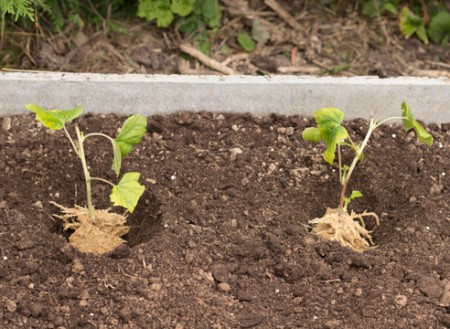
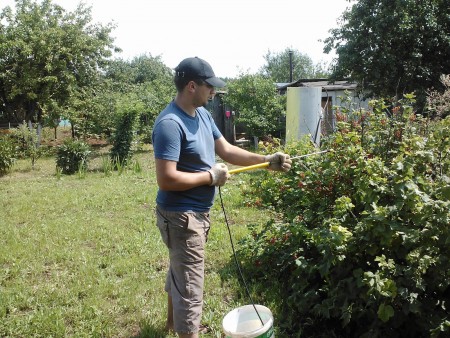
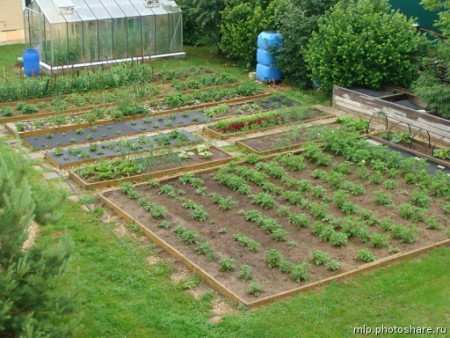
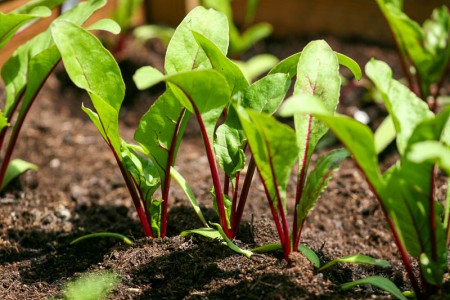
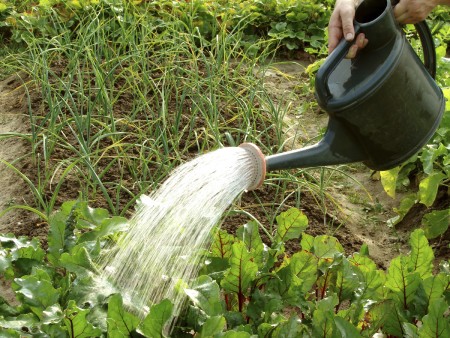
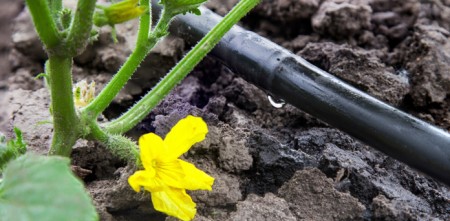
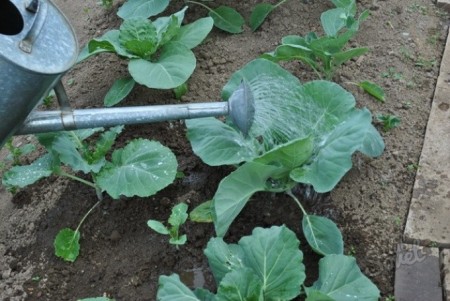
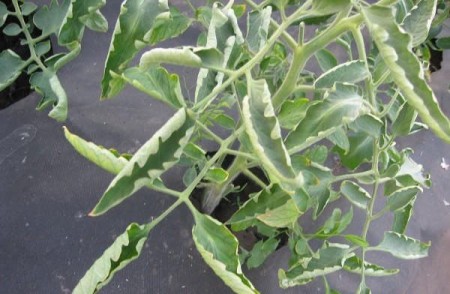

 (9 ratings, average: 4,78 out of 5)
(9 ratings, average: 4,78 out of 5) CUCUMBERS NEVER GET SICK, I'VE BEEN USING ONLY THIS FOR 40 YEARS! I SHARE A SECRET WITH YOU, CUCUMBERS ARE LIKE THE PICTURE!
CUCUMBERS NEVER GET SICK, I'VE BEEN USING ONLY THIS FOR 40 YEARS! I SHARE A SECRET WITH YOU, CUCUMBERS ARE LIKE THE PICTURE! You can dig a bucket of potatoes from each bush. Do you think these are fairy tales? Watch the video
You can dig a bucket of potatoes from each bush. Do you think these are fairy tales? Watch the video
 How our fellow gardeners work in Korea. There is a lot to learn and just fun to watch.
How our fellow gardeners work in Korea. There is a lot to learn and just fun to watch. Eye trainer. The author claims that with daily viewing, vision is restored.They don't charge money for views.
Eye trainer. The author claims that with daily viewing, vision is restored.They don't charge money for views. A 3-ingredient cake recipe in 30 minutes is better than Napoleon. Simple and very tasty.
A 3-ingredient cake recipe in 30 minutes is better than Napoleon. Simple and very tasty. Therapeutic exercises for cervical osteochondrosis. A complete set of exercises.
Therapeutic exercises for cervical osteochondrosis. A complete set of exercises. Which indoor plants match your zodiac sign?
Which indoor plants match your zodiac sign? What about them? Excursion to German dachas.
What about them? Excursion to German dachas.